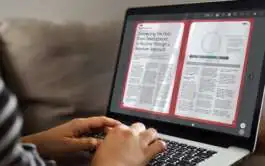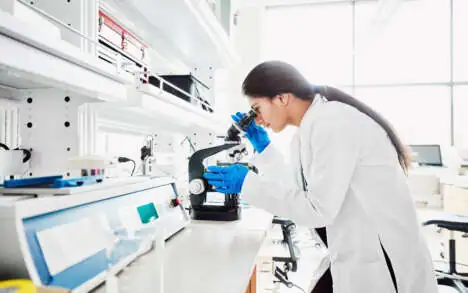The National Institute for Bioprocessing Research and Training (NIBRT) is a centre of excellence for training and research in biopharmaceutical manufacturing. NIBRT is located in a world class facility in Dublin, Ireland.[1] This facility is purpose built to closely replicate a modern bioprocessing plant with state-of-the-art equipment and enables NIBRT to offer the highest quality training and research solutions. The facility provides hands-on training in upstream, downstream, fill-finish, bioanalytical and cell & gene therapy manufacturing. Within this state-of-the-art facility, NIBRT offers hands-on training in upstream, downstream, fill-finish, bioanalytical, and cell & gene therapy manufacturing.
The latest addition to NIBRT’s training capabilities is a state-of-the-art filling and barrier system for aseptic syringe filling. An event was organized by NIBRT to showcase their new advanced aseptic filling technology and give participants the opportunity to hear from industry experts how they can align with regulatory requirements, in particular EU GMP Annex 1[2]. Discussions during the event centered on Annex 1 compliance using barrier technology, training needs and challenges of personnel involved with the manufacture of sterile medicinal products. Participants also discussed the challenges industry is now facing in preparation for and during inspections against the Annex 1 requirements.
Annex 1 and requirements for Barrier Technologies
Annex 1 has been in force since August 2023 and states that the use of appropriate technologies such as restricted Access Barrier Systems (RABS) and isolators should be considered to increase the protection of the product from potential extraneous sources[3]. While these expectations already existed, the previous version of the guidance lacked clarity about these expectations.
With the adaptation of Annex 1 by the Pharmaceutical Inspection Co-operation Scheme (PIC/S)[4]] and World Health Organization (WHO)[5] it has increasingly become a worldwide document and its objectives will need to be adopted by companies in all markets. Presenters noted that the pharmaceutical industry tends to be slow to embrace new technologies, yet it has become more of an expectation by regulators to do so — as Annex 1 makes clear.
As highlighted in Annex 1, implementation of a Contamination Control Strategy (CCS) is key2. The CCS needs to be actively reviewed and is expected to be a living document. If changes to a process or facility are planned, they should be documented as well as show how these changes potentially impact the CCS. Although using isolator technology provides the highest level of segregation between personnel and the critical zone, design is equally critical to reduce the risk of introducing contamination. Environmental monitoring won’t prevent contamination from happening as it is only a detection mechanism, and companies cannot rely on it.
One major section in Annex 1 describes requirements around barrier technologies and spells out the two major types of design for isolators: open isolators and closed isolators[6]. Each has minimum requirements about the background classifications of the cleanroom. The sections also provide information about glove integrity testing. When using isolator technology, integrity testing should, at a minimum, be performed at the beginning and end of each batch or campaign. However, interim testing should be considered for longer fill cycles and the applied frequency justified. Presenters also made clear that isolators must be decontaminated using a sporicidal agent by way of an automated process that is validated and controlled within the defined cycle parameters such as temperature, relative humidity concentration of the decontaminant and dwell time. At the same time, the fragility of automated decontamination processes should be considered.
Isolator set-up is an important part of the preparation process before the unit is decontaminated. The risk of introducing microbial and particulate contamination should be minimized as these could impact the overall effectiveness of the decontamination process, presenters noted. Sterilization of direct contact materials is required and consideration of increased garbing to reduce the risk of introducing contamination during the set-up process should also be considered.
The FDA has its own requirements on having procedures and design controls in place to prevent microbiological contamination of drug products5,6 and as such also expects companies to adhere to the principles of Annex 1. This is evident when analyzing the reasons for recalls. During the event, the presenter pointed out that research of the US Food and Drug Administration (FDA) website found that, out of 647 recalls, 158 were related to lack of sterility assurance. This indicates that despite the availability of technology, there is still a lot of work to do.
Training needs and challenges
It is our experience that actual time available on equipment for training is typically limited within companies. As was made clear during the event, time should be made available for personnel training purposes as part of their Grade A/B qualification and Aseptic Process Simulation (APS) qualification and there is the requirement for periodic requalification of these. However, training time is hindered by the constant use of equipment for commercial activities and consumable materials, such as sterilized stoppers as these could be prioritized for commercial activities over training purposes.
The length of the manufacturing process also adds to the challenge as it raises the question as to when or at what stage of the process should the operator be trained? If observation of activities is required, when do these occur (some may only occur infrequently) and would the operator be available at the specific time? As such, repetition of tasks to gain experience and confidence in one session is not always possible.
Scheduling training time on a commercial line can be very challenging due to the nature of the process, changing timelines and shift rotations. Activities in other areas can impact on the process, for example vial washing and autoclave cycles.
Despite these challenges, in our experience it’s important that training on how not to impact on the sterility of the product or its components be embedded in the organization. It’s important that all personnel understand that corrective and inherent interventions be performed the same time, every time in a consistent manner. Sufficient training time with opportunities to repeat the task must be afforded to personnel to build confidence in their proficiency.
As discussed during the NIBRT event, design of the equipment is paramount to reduce the risk for introducing contamination, but of equal importance is how people interact with the equipment.
Instead of using the equipment in their real setting, offline training options like the use of a mock-up model or virtual reality setting have a benefit as there is less distraction and these do not impact on commercial activities. The setting is more relaxed as there is an option to repeat exercises multiple times without impacting on the real equipment or product. This allows the trainer to explain what went wrong and helps to build on confidence and consistency. It provides an environment for personnel to develop “muscle memory” before going to the real setting.
The first step is to understand the “why” of an activity. Focusing on the compliance element alone brings the risk that personnel are merely following the procedure, demonstrating the “how” and “what” to do, but do not understand the “why”. In our experience, embedding scientific thinking in a training and qualification program stimulates the trainee to think about the why-element. It allows personnel to understand the reasons behind procedures and the potential impact of deviations. Furthermore, it motivates personnel to challenge the status quo and drives continuous improvement. Indeed, understanding the rationale behind procedures and processes and the impact when they are not adhered to is also becoming an expectation from regulators2.
NIBRT’s new isolator system
NIBRT has seen that companies in Ireland are increasingly implementing aseptic fill and finish activities in their manufacturing processes. To enhance their training portfolio and give companies the opportunity to introduce their operators to isolator technology and have them trained in a safe environment, the institute added an aseptic filling isolator to their technical capabilities
As the industry uses different configurations, the design of the isolator had to meet the different settings/options as seen in the industry. NIBRT went through the entire sequence of FAT/SAT, IQ and OQ testing (Software Acceptance Testing, Installation Qualification/Operational Qualification). For the ergonomics aspects, a wooden mock-up model of the designed fill line was completed. This enabled NIBRT to utilize both RABS and Isolator technology using a nested syringe filling system as options to be trained on.
As part of the event, , participants were given a site tour to see the isolator in operation, followed by opportunities for further discussions and questions.
About the authors:
Patrick Nieuwenhuizen is Director and Principal Consultant at PharmaLex, and has more than 25 years of experience in the industry across a variety of platforms including Biologics, Sterile Fill Finish and Solid Oral Dose.
Noelle Clifford is Manager and Consultant at PharmaLex and has over 16 years of experience in the pharmaceutical industry inclusive of Sterile Fill Finish, Dry Powder Inhalation products, Solid Oral Dosage and Creams and Ointments.
[1] National Institute for Bioprocessing Research & Training. https://www.nibrt.ie/
[2] EudraLex Volume 4 Good Manufacturing (GMP) Guidelines – Annex 1, Manufacture of Sterile Medicinal products (2022). https://health.ec.europa.eu/system/files/2022-08/20220825_gmp-an1_en_0.pdf
[3] Entry into force of revised GMP Annex 1, PIC/S, August 2023. https://picscheme.org/en/news/entry-into-force-of-revised-annex-i-pics-gmp-guide-pe-009-17
[4] Pharmaceutical Inspection Co-operation Scheme PE 009-17 (2023): Guidance to Good manufacturing Practice for Medicinal Products Annexes. Accessed through: https://picscheme.org/docview/6608
[5] World Health Organization Annex 2: WHO good manufacturing practices for sterile pharmaceutical products (2023). https://cdn.who.int/media/docs/default-source/medicines/norms-and-standards/guidelines/production/trs1044-annex-2-gmp-for-sterile-pharmaceutical-products.pdf?sfvrsn=d924ed65_1&download=true
5 Food and Drug Administration 21 Code of Federal Regulations 211.113 – Control of microbiological contamination (2008). Accessed through: https://www.ecfr.gov/current/title-21/chapter-I/subchapter-C/part-211.
6 Food and Drug Administration Guidance for Industry: Sterile Drug Products Produced by Aseptic Processing – Current Good Manufacturing Practice (2004): Accessed through: https://www.fda.gov/media/71026/download
[6] EudraLex Volume 4 Good Manufacturing (GMP) Guidelines – Annex 1, Manufacture of Sterile Medicinal products (2022), section 4.18. https://health.ec.europa.eu/system/files/2022-08/20220825_gmp-an1_en_0.pdf








